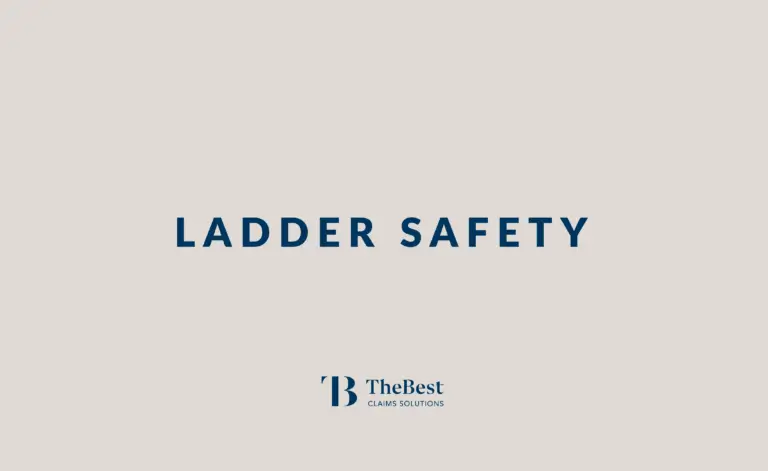As an adjuster, ladders are likely a part of your daily routine. This means it’s critical to your safety and success to be cautious while using them. The CDC reported last year that 43% of fatal falls in the last decade involved a ladder. Whether you rely on a ladder every day for work or it’s something you use sparingly at home, here’s how you can practice proper precautions.
Step 1: Choosing the Right Ladder
There are four main categories to consider when choosing a ladder.
Style – There are numerous styles of ladders, so be sure to choose one that can best accommodate the work you do daily. Our recommendation? Avoid telescopic (aka tube) ladders, as they tend to wear easily over time. Adjusters should look for ladders that can easily be transported, while also being made of sturdy materials.
Height – How tall does the ladder need to be? Pick a height that best fits the type of buildings you plan to scale. While most adjusters can get away with a ladder that’s under 24 ft, if you plan on inspecting multistory, consider getting a ladder that exceeds 32 ft.
Duty Rating – What kind of load does it need to support, and what environment will you be using it in? The right duty rating for you depends on the external uses of the ladder.
To calculate the duty rating that best fits your needs, the American Ladder Institute recommends the following equation:
[Your Weight] + [Weight of Clothing and Protective Equipment] + [Weight of Tools/Supplies You’re Carrying] + [Weight of Tools/Supplies Stored on Ladder]
Material – Should your ladder be made of aluminum or fiberglass? Or perhaps wood? Aluminum is the most common and is typically more portable than it’s alternatives, making it the ideal choice for most adjusters. However, it’s good to have a wood option on hand in case of inspections with electrical hazards.
Step 2: Safety Before the First Step
Now that you’ve picked the right ladder for you, there are a couple of safety measures you should take to ensure a steady and secure climb.
Inspect the Ladder
It’s important to check your ladder for any fractures, chips, surface cracks, or foreign materials that may negatively impact your climb.
Consider Your Environment
Where you set up your ladder is as important as the ladder itself. Ensure the surrounding area is clear of debris and the ground is stable before setting up your ladder.
Step 3: Safety While Climbing
Now that you have set your ladder up for success, it’s time to climb. The most important thing to remember? Maintain awareness of your surroundings, keep at least 3 points of contact on the ladder at all times, and wear proper shoes.
Check your surroundings.
It’s important to be aware of what’s happening around you while climbing ladders. It’s easy to be taken unaware by the homeowner’s dog or the neighborhood kids running by, knocking into your ladder. Situational awareness is key to staying safe during your climb.
Maintain contact.
Whether it’s 2 hands and one foot, or two feet and one hand, keeping 3-points of contact on the ladder throughout your climb will ensure a safe and secure assent.
Wear proper footwear.
Good footwear is paramount to ladder safety. If you are wearing shoes with poor grip, one wrong step could lead to slipping and falling 20 feet. Ensure your shoes have excellent grip and traction, are made with durable materials, and have good arch support to help prevent other injuries.
Step 4: Safety at the Top
You’ve made it to the top! It’s more important than ever to remain cautious and vigilant of your surroundings.
- Avoid overreaching
- Do not attempt to ladder-walk or hop between ladders
- Always wear protective gear
- Keep three points of contact on at all time
- Follow the instructions provided on your ladder



